Best Low-Latency Video Streaming Solutions to Live Stream in 2024
When streaming live videos as a professional, you must focus on creating an excellent experience for your viewers. One way to create a great live video viewing experience is by keeping the latency on your streams low.
Imagine live-streaming a concert or live event, for example. You excite your viewers by creating buzz around the event on social media. Everything’s lined up, but there’s a lag in your live-stream on the viewer’s end.
Only a few viewers will sit around waiting for the stream to load. A single buffering event can cause up to 40% of viewers to lose interest and switch to something else. Even if the live-stream buffers for a concise period.
These lost viewers might not be willing to tune in to your other live and on-demand streams in the future. Today’s audience is spoiled for choice, and they hate waiting.
That’s where low-latency streaming solutions come in. That’s how live streams maintain continuity and quality throughout their duration, allowing viewers to experience the content in real time.
Latency is the delay between when an image is in the real-time video is captured on your camera and when your viewer experiences it on their screen. With live content, you would ideally want no-delay streaming. Low-latency video streaming is particularly essential for professional broadcasting.
Understanding how low-latency video streaming works can help engage your audience better. That’s thanks to CDN solutions that can bring down latency to milliseconds.
This post will explain low-latency live video streaming and the features you should look for when choosing a low-latency streaming platform. We will wrap things up by mentioning a few great encoders for low-latency streaming.
Let’s get started.
Table of Contents
- What is Low Latency Streaming?
- The Value of Low Latency Video Streaming Solutions
- How to Choose the Best Low-Latency Streaming Solution for Live Streaming Without Delay
- Top 7 Solutions for Live Streaming without Delay
- Low-Latency Encoders for Streaming
- FAQs
- Conclusion
What is Low Latency Streaming?
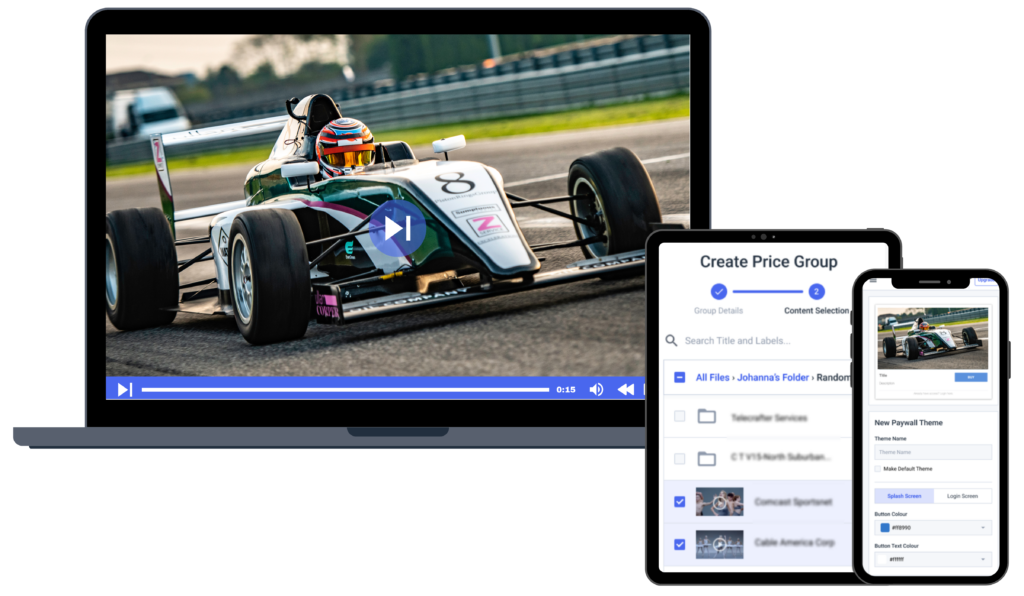

Let’s get a bit technical here. Live streams are not live. There’s usually a 20-120-second delay between the event and the video streaming on viewers’ mobile devices. That’s video latency, the delay between when a video frame is captured and when that frame is displayed to the viewer.
For example, if you’re watching a live sporting event, latency is the time between a player making that legendary winning goal in real life and seeing it happen on your screen at home. You want the stream delay to be short enough to be unnoticeable.
Latency occurs in a broadcast because processing and sending live video takes time. It doesn’t take much time, of course. Nonetheless, each step in the process results in a tiny delay. These steps include:
- Camera processing of the image
- Encoders transcoding the content
- Time for the video to be transmitted to the viewer
- Buffering
- One’s viewing device decodes and then displays the video.
According to Encoding.com, most streams have latency in the 30-120 second range—sometimes more.
There are two parts to latency:
- Startup time and the lag between the event taking place
- The video streams on a viewer’s screen.
Both are important to the viewer’s experience. Unfortunately, reducing one latency component can increase the other in some cases. That’s why it’s important to understand the balance between these two parts and how to stream without any delay effectively.
Impact of High Latency
Here’s how high latency causes lagging and can impact your live broadcast:
- Viewers want to feel like they see things in real-time. High latency can negatively impact a viewer’s experience by lengthening the lag. Viewers don’t want to look on Twitter and see a tweet about what they are watching before it appears on their mobile devices.
- Live-stream audiences want to feel connected – like they are in there in person. When there’s a delay or if the video is constantly buffering and loading, it takes away from the real-life experience people look for with a live-stream.
- Minimizing latency helps relay the content you’re broadcasting to your viewers in a more “real-time” fashion. It helps keep them connected and engaged since it’s the closest thing to attending your event in real life. Reducing latency for streaming keeps your viewers engaged in real time.
Is Zero-Latency Live Streaming Possible?
As mentioned earlier, video streaming involves various steps, including image processing, transcoding, buffering, and decoding. Each step will add a bit of delay to the process. Therefore, it isn’t theoretically possible to achieve zero-latency live streaming.
Having said that, you can choose the right low-latency live-streaming solution to keep delays at a minimum and ensure a seamless viewing experience. It’s also worth keeping in mind that achieving near-zero latency can lead to poorer video quality.
The Ideal Video Latency For Live Streaming
Are you wondering what latency is good for streaming? There isn’t a universal answer to this question.
The lower your streaming latency, the better the quality of your live video streaming. However, there are different levels to what would be considered ideal, and what that means for your streaming experience.
A delay of 30 seconds or more is considered high latency, and this can significantly affect your live streaming experience as your users will be disconnected from your stream significantly.
However, if you bring that delay down to 5 to 15 seconds, you’ll have achieved low latency. This amount of delay is generally acceptable in the live-streaming world and your live-stream session will be professional enough. It is particularly suitable for non-interactive content, such as concerts and news.
When it comes to OTT (over-the-top) platforms, the best latency for streaming is considered 5 to 18 seconds. On the other hand, latency in the range of 2 to 10 seconds is ideal.
The highest form of quality, however, is achieved with ultra-low latency (ULL), which refers to a delay of less than one second, i.e. milliseconds or even less. Ultra-low latency live-streaming is ideal for high-engagement content such as auctions and online gambling.
Similarly, interactive live streams, such as gaming and webinars, also demand ultra-low latency (usually lower than 200 milliseconds).
Low Latency Video Streaming Protocols
If you want to understand how to reduce delay in live streaming, a deep understanding of a low latency video streaming protocol is crucial. These protocols define how video data can be captured, transcoded, and displayed to viewers with minimal delay.
A low-latency streaming platform will typically use one of the following protocols:
- HLS (HTTP Live Streaming)
- MPEG-DASH (Dynamic Adaptive Streaming over HTTP)
- RTMP (Real-Time Messaging Protocol)
- SRT (Secure Reliable Transport)
- WebRTC (Web Real-Time Communication)
While HLS and DASH are commonly used for low-latency streaming, WebRTC is an effective ultra-low-latency streaming protocol. WebRTC is particularly suitable for live streams that require two-way communication.
The Value of Low Latency Video Streaming Solutions
Studies show that longer start-up times drive viewers away and negatively impact their smooth streaming experience. Online videos with a start-up time exceeding two seconds have significantly higher streaming video abandonment rates.
Each incremental second lag propels another 6% of viewers to jump ship. That’s why learning how to reduce delay in live-streaming at the start of your video is essential to retaining viewership.
Low video streaming latency during the broadcast of deployed content is critical in various situations. Here are a few scenarios in which low-latency media solutions are especially critical:
- Sports streaming.
- Live auctions.
- Live streaming involves chat, real-time feedback, or audience participation.
- Video game streaming.
- Gambling.
- Dual-screen viewing (increasingly common for all broadcasts)
- Concerts.
- Question-answer sessions.
- Political events such as debates or vote counting.
Streaming with low latency solutions helps viewers watch these events unfold in almost real-time, creating a more lifelike experience. Low-delay streaming is the best way to keep your viewers engaged.
How to Choose the Best Low-Latency Streaming Solution for Live Streaming Without Delay
Only a few online video streaming platforms deliver efficient low-latency streaming services today. Each solution offers a different combination of price, usability, and features.
Let’s look at some of the features you should look for when choosing a solution to live video stream without delay.
- HLS Streaming protocol
- Less than 15 seconds of latency
- Simple set-up
- Budget-friendly
- A reliable content delivery system
HLS Streaming Protocol Delivery
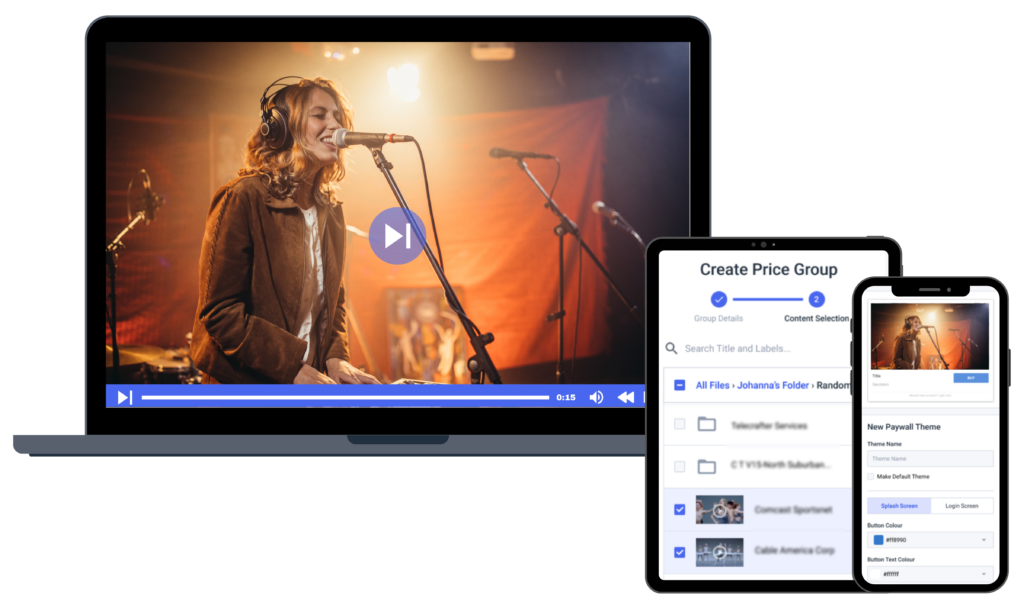

The best low-latency video streaming platforms use the HLS streaming protocol. “HLS” is short for “ HTTP Live Streaming.”
Apple designed HTTP Live Streaming, a low-latency video streaming protocol, to work with HTML5 video players on iOS devices and applications like Apple TV. Both HTTP Live Streaming and HTML5 players are successors of the ancient Adobe Flash Player technology.
How HLS Streaming Works
Most HLS streams or HTTP Live Streaming protocols start with RTMP ingest, automatically converted to HLS for delivery by the video platform. That provides high-quality HTTP Live Streaming to viewers but can introduce a latency of 30 seconds or more, a huge live stream delay.
RTMP is still used for video ingestion rather than HTTP Live Streaming for deliveries and ingest because HTTP Live Streaming has a much higher latency. The RTMP ingest/ HTTP Live Streaming delivery combo makes streaming on an all-device HTML5 video player possible while reaping RTMP’s low latency benefit.
When paired with the right-side CDN providers, this technology can help decrease your latency into the 12-15 second zone. That’s a much better live stream delay.
Less than 15 Seconds of Latency
Cable TV and professional broadcasts usually have 10 seconds or less latency. Ultra-low latency is under 1 second.
So how to stream without delay?
To achieve less than 15 seconds of latency, you need a combination of features to work together. That’s why, when comparing streaming solutions, it’s best to ask the sales representative how many seconds of latency their platform has.
You want to aim for less than 15 seconds of latency for professional broadcasts. Dacast, for example, offers HLS delivery with RTMP ingests for low-latency video streaming. That reduces latency to 15 seconds or less and is most suited for professional broadcasts and online businesses
At Dacast, we’re constantly working to reduce our latency further so that our end users everywhere can produce live streams close to real-time video streaming. We’re very excited about our recent partnership with Limelight CDN for the launch of our UApp.
Both of these additions aim to reduce latency even more. Dacast continues to invest in the best tools so that you don’t have to think about reducing stream delay; we will take care of it for you.
Simple to Set Up and Use
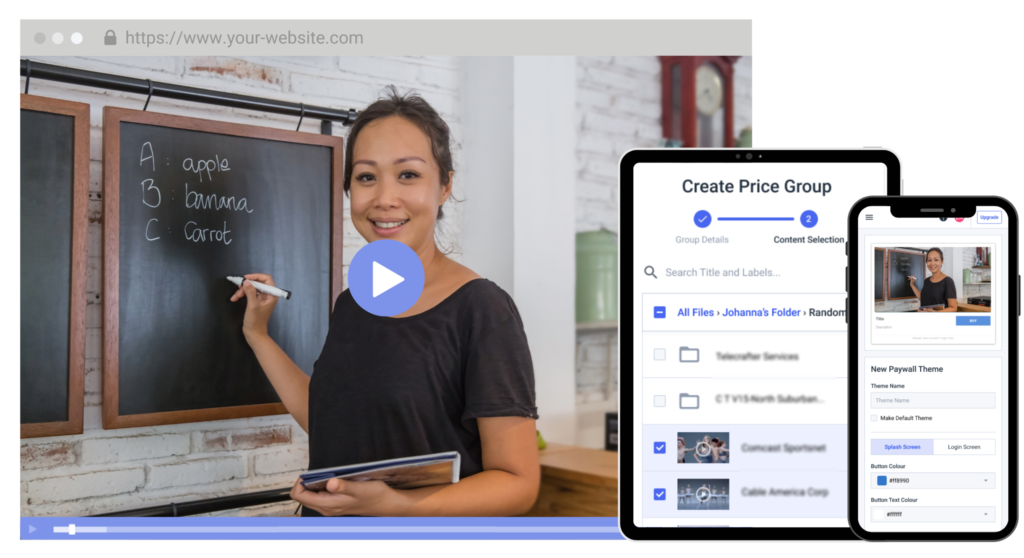

If you are new to professional broadcasting, you’ll want to choose a low-latency streaming solution that is easy to use. Unless your role at your company is dedicated to live streaming, you likely don’t have the time for a steep learning curve. That is why you need a video hosting service that makes learning to reduce stream delay as easy as possible.
Choose a user-friendly streaming solution with a reliable customer support team that can help you when you need it.
It is also good to ensure your streaming solution works seamlessly with professional equipment and the laptop or computer you plan to work with.
For example, Dacast requires a consumer-grade laptop to run (i5 processor and 8 GB of RAM minimum). You can also use the OBS Studio software encoder with Dacast, which is free.
Compare that to hardware encoders or workstations that typically cost $1,000 and up (some cost $10k+), and you can save substantial amounts of money. That makes streaming professional-grade broadcasts without a massive budget more manageable than ever.
Fits Your Budget
Live streaming pricing varies widely. Many offer cheap introductory pricing but limit professional features to costly platforms.
- For example, a service like IBM Cloud Video restricts features like API access to plans costing over $138 monthly.
- As another example, Vimeo restricts 24/7 live streaming, monetization, advanced security features, dedicated support, and video API access to custom plans with a similar costly price range.
These aren’t cherry-picked examples. Every live-streaming platform on the market requires an investment to access more advanced features.
Comparatively, Dacast offers live streaming starting at just $39 per month and all access to premium features at $165 per month, billed annually. That includes all the restricted features of these other streaming solutions. Dacast offers low-latency video streaming at a price all businesses and broadcasters can afford.
VOD hosting, live streaming, API access, monetization, 24/7 tech support, and all security features are included with every Dacast plan. Dacast offers many professional features allowing you to produce professional content and avoid a lengthy live stream delay when you broadcast.
Reliable Content Delivery
Why do your viewers seem to drop out during your live streams? Let’s hear it straight from your audience. Sixty-three percent of live-stream viewers last year cited buffering issues as the most severe issue they experienced, an increase from the previous year.
This means that streaming lag and buffering point to a tough issue. A robust CDN, Content Delivery Network, or a multi-CDN solution is the best.
A CDN consists of thousands of servers distributed to data centers worldwide. These services help deliver internet content to users quickly. They do that by automatically duplicating data and using intelligent routing algorithms to mine web traffic and find the fastest path to any website or viewer.
Here are some plus points to streaming with less bandwidth usage, no matter where your viewer is located and regardless of their network conditions, the stream latency they experience will be as low as possible. That’s how you’re able to:
- Improve security
- Speed up delivery
- Reduce buffering
- Eliminate lagging issues, cutting down on steam latency
- Improve scalability to suit audiences of any size
- Build in an additional layer of redundancy.
Don’t want to introduce latency in your streaming when your audience grows? Then close your CDN providers carefully. Using more than one CDN can also help since multi-CDNs help improve web performance and security. Using multiple CDNs is an excellent plan B in case one fails. Not all CDNs are created equal. Some are much smaller and slower than others, and some CDN providers don’t support live streaming video. Dacast works with Limelight, one of the most reliable CDN providers. That means your live stream delay will be as short as possible for your viewers worldwide.
Top 7 Solutions for Live Streaming Without Delay
Now that you understand what to look for in a low-latency video streaming service let’s look at some of the top streaming solutions with integrated low-latency live streaming options.
We will compare our platform Dacast with the Limelight CDN network, and the cloud streaming alternative Wowza. We’ll also take a look at a few other platforms–Evercast, Millicast, OBS, and Twitch.
1. Dacast
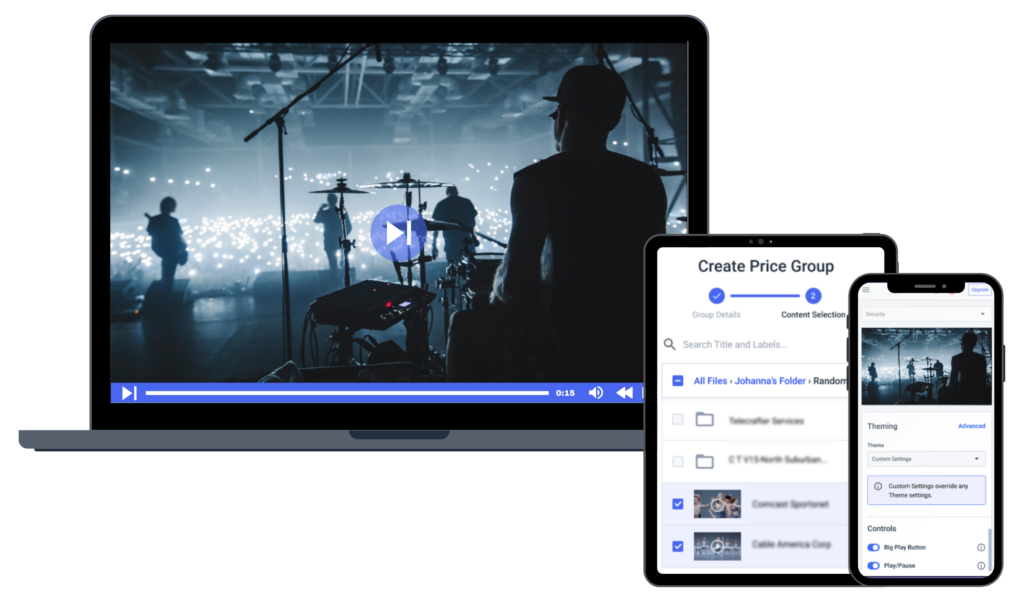

First up is Dacast. The video streaming platform includes both live streaming and video-on-demand hosting and a wide range of professional broadcasting features. You can enjoy low-latency streaming with Dacast.
The features of this low latency live streaming solution include:
- Cloud video transcoding adaptive bitrate streaming
- Multi-bitrate streaming for live video and VOD
- Player API access for 3rd party player integration
- Video API access on premium plans
- Zoom live streaming integration
- Expo galleries video portal
- VOD platform to monetize on-demand content and scale your VOD business
- service
- Built-in video monetization
- Video security features, including password protection and encryption
- RTMP Encoder for ingesting HLS streaming
- Real-Time Analytics
- CDN delivery via several partnerships
- 24/7 tech support with all plans, including email and live chat
- Competitive live streaming pricing plans
With Dacast, you can even broadcast your content on social media platforms like Facebook and create a countdown to build hype. This makes the platform ideal as virtual concert software, too.
It provides both live streaming and on-demand video hosting, which is ideal for hosting virtual concerts and then making them available on-demand. Additionally, the multi-bitrate streaming and low latency mean you can offer a superior live concert experience to your viewers virtually.
Low Latency Options:
Dacast now offers low-latency streaming as a standard feature. On average, this reduces latency to 10 seconds or less, a significant improvement over standard low- latency HLS live streaming. Dacast can help you achieve your goal of ultra-low latency live streaming.
Streaming live video with Dacast starts at just $39 per month. Pricing plans include four packages:
- Starter plan: Ideal for newcomers with 2.4 TB of bandwidth and 500GB of storage per month, billed annually at just $39 per month.
- Scale plan: Includes 24 TB of bandwidth per year, with 2TB of storage for $165 per month billed annually. These Scale pricing plans add phone support, a monetization paywall, an M3U8 online player for, ad insertion, white-label Cnames, and video API access.
- Event plan: for organizations who’d rather not sign a contract and want to purchase bandwidth separately, it offers 6 TB of bandwidth upfront, 250GB of storage, and costs just $63 per month (or $750/year). Additional data and storage can be added as needed.
- Custom plan: If your enterprise business has high-volume streaming needs.
Broadcasters can contact Dacast directly to learn more about custom-priced plans.
2. Limelight
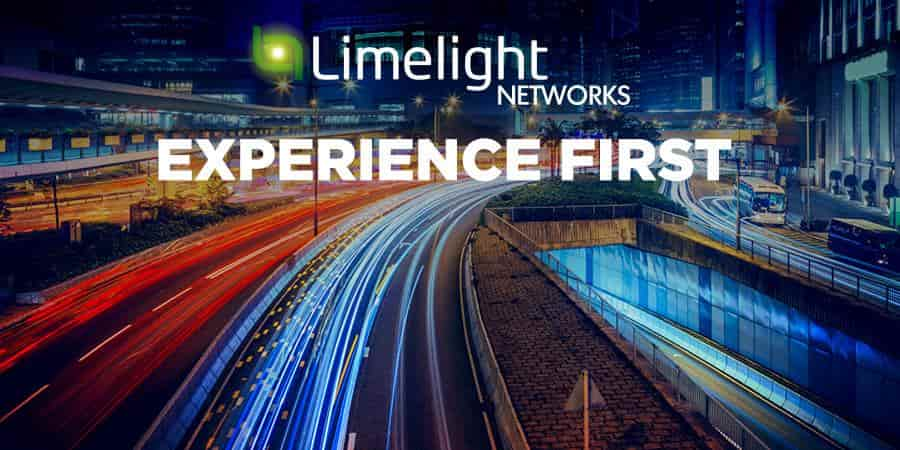

Limelight, now Edg.io offers some support for hosting live streams with low latency.
The package broadcasters would use in that situation would be “Video Delivery,” not to be confused with their “Content Delivery” package.
Although this platform can host a live video and manage ordinary web servers, end-user deployment features are much more limited than Dacast.
That said, here are a few of the other tools and features of this platform:
- VOD and live video hosting
- Video content management
- Video storage
- Ad-insertion
- Video analytics
- API to improve workflows
Low Latency Options:
Limelight is an ultra-low latency live streaming service by nature. The platform uses WebRTC technology and UDP data transfer streaming protocols to make that possible for wireless network connection. They can provide you with access to low latency video streaming protocols for wireless connections that will enhance the performance of your live broadcasts.
Limelight does not have live streaming hosting prices listed on their website, but you can request a free trial to get started.
3. Wowza Streaming Cloud
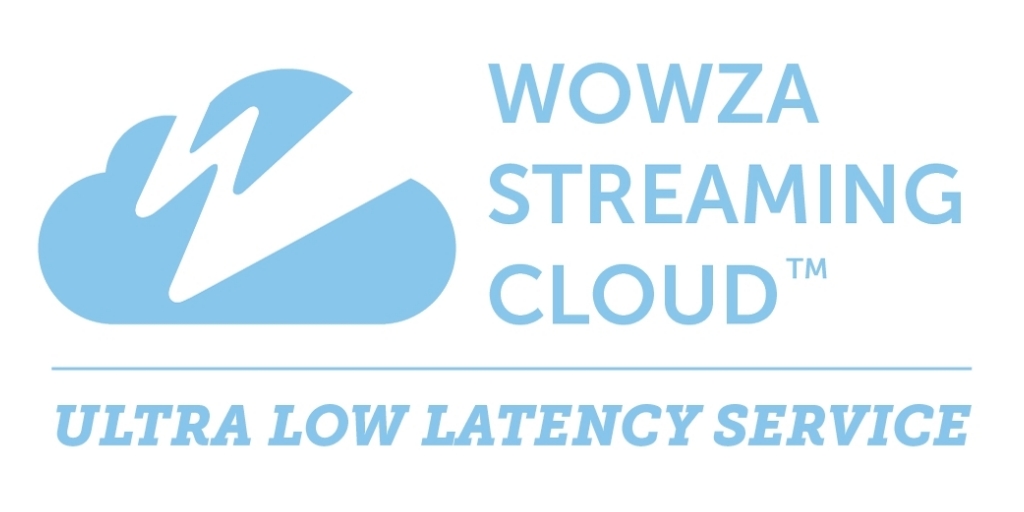

Now, let’s take a look at Wowza’s live streaming and VOD platform. The Wowza product most relevant to low latency video streaming is “ Wowza Video.”
Some features of this low-latency video streaming service include:
- Live streaming and on-demand video hosting
- Host-you-own live streaming server product
- White-label streaming
- End-to-end analytics
- API and SDK available
- Mobile-compatible HTML5 video player
- Customer support (*note that phone support and fast responses cost extra)
- RESTful API available
- No monetization options
- No phone support
Low Latency Options:
Low latency streaming server media solutions deliver video with less than 10-second latency.
As we mentioned, Wowza Video is the product from Wowza most comparable to the above-mentioned ones.
Within Live Event Pricing, monthly plans include:
- Pay As You Go: $2.50 per streaming hour, $0.10 per viewer hour; flexible streaming with low startup costs.
- Basic On-Prem Event: $195/month; includes up to 10 concurrent transcoded channels.
- One Month Cloud Event: $149 one-time purchase; includes 15 hours of live streaming and 500 viewing hours at 720p
- One-month On-prem Event: $295 one-time purchase, including up to 10 concurrent transcoded channels.
- Enterprise: Best for large audiences as it provides 24/7 real-time streaming at scale.
All of these Live Event plans include complete brand control, multi-bitrate streaming, and UHD and HD streaming.
Wowza is a good choice if you want to enjoy ultra-low latency streaming without monetizing your video content.
4. Evercast


If you’re looking for an ultra-low latency streaming platform that’s designed to support collaboration, Evercast is an excellent choice. The platform lets you stream the document or media file you’re using on your laptop in 4K while connecting on a live video chat with other team members. Bolstered with advanced security features, such as 24/7 threat monitoring, watermarking, and encryption, Evercast is ideal for content creators and game developers.
Key features include:
- 4K streaming and video chat
- In-sync audio/video with an average latency of 150 ms
- Dedicated apps for Android, Apple, and Windows devices
- Collaborative features, including 4K screen share and interactive playback
- Advanced security, including encryption, multi-factor authentication, and 24/7 threat monitoring
- 24/7 white-glove support
Low Latency Options:
Evercast lets you stream video files and live videos with an average latency of 150 milliseconds. That makes it suitable for ultra-low delay streams.
Pricing plans for Evercast include:
- Month-to-Month – Starts at $849 per month and comes with multi-stream session recording, 4K file streaming, and more.
- Commitment – Starts at $549 per month and includes on-site support.
- Enterprise – Custom-made plans for organizations with more complex streaming needs.
Regardless of the plan you select, you get access to ultra-low latency streaming. However, unlike Dacast, the platform doesn’t offer analytics and monetization options.
5. Dolby Millicast


Millicast is an interactive live-streaming platform that was acquired by Dolby in 2022. Built on WebRTC, Millicast supports unlimited concurrent viewers and end-to-end encryption. This makes it ideal for enterprise-level broadcasters with wider audiences. The platform’s API comes in handy for various use cases, including live auctions, virtual classrooms, watch parties, and gaming.
Notable features of this ultra-low latency streaming platform include:
- 4K video streaming
- Worldwide CDN delivery
- Real-time interaction tools
- Monetization options, including interactive content and contextual advertising
- Multiple streaming protocols, including WebRTC, RTMP, SRT, and WHIP
Low Latency Options:
Millicast uses a combination of WebRTC, RTMP, WHIP, and other streaming protocols to keep the delay under half a second. That makes it an ultra-low latency video streaming solution.
Pricing plans for Millicast include:
- Test Account – Available for free; allows up to 20 concurrent viewers and includes 50GiB CDN bandwidth.
- Standard – Starts at $495 per month; allows unlimited concurrent viewers and includes 500GiB CDN; additional bandwidth can be purchased at an extra cost.
- Personalized – Flexible plans tailored to your needs and budget.
- Enterprise – Custom pricing; comes with onboarding support and early access to beta products and features.
6. OBS


OBS, or Open Broadcast Software, is widely used to live stream video on various platforms, such as Facebook and Twitch. The free and open-source solution is compatible with Windows, macOS, and Linux and is extremely popular among gamers.
Some features of this open-source live-streaming platform include:
- High-performance video/audio capture in real time
- Intuitive audio mixer
- Customizable modular UI
- Customizable transitions
- Low-latency mode
Low Latency Options:
While the standard latency for OBS is around 5 seconds, the platform comes with a “Low Latency Mode.” With this setting, you can reduce latency to as low as 1 to 2 seconds. OBS also offers an ultra-low latency mode. However, it can impact the video quality.
7. Twitch


Twitch is a live streaming platform that’s used by content creators in various fields, from politics to sports. It’s exceptionally popular among gamers who want to stream play sessions and interact with their audience.
Owned by a subsidiary of Amazon, Twitch offers the following features:
- Live chat to engage with viewers
- Twitch extensions for customizability
- Viewership rewards
- Monetization options
Low Latency Options:
Like OBS, Twitch also comes with a low-latency mode that reduces delays to as low as 5 seconds. The good thing is that this mode is enabled by default on most channels. It allows streamers to interact with viewers in near-real time.
It’s worth mentioning that platforms like OBS and Twitch are better suited for individual streamers, not organizations.
Low-Latency Encoders for Streaming
Several other high-performance and quality features need to work together for streaming with low latency. One of the additional tools you will need to use is a video encoder alongside your video streaming solution.
One of the essential tools for live streaming is a video encoder. You can stream your media files using a free or paid video encoder or a software or hardware solution.
Free Video Encoder
One of the best free encoders on the market is OBS Studio. OBS Studio is compatible with Windows and Mac and integrates with various production and mixing tools. You can also use a wide range of plugins, scripts, and custom themes with OBS Studio.
Paid Software Video Encoder
You can use a wide range of strong paid video encoders. A few of the top paid software video encoders include:
- Wirecast
- VidBlasterX
- vMix
Paid Hardware Video Encoders
There is also a wide range of hardware video encoders you can use as well, such as:
- LiveU Solo
- TriCaster
Want to learn more about encoders you can use to support low-latency live streaming?
Read our article comparing the 12 best live streaming encoder software and hardware solutions.
As you become more experienced, you may invest in a paid encoding tool instead of a free one. We recommend exploring different hardware and software encoders.
FAQs
1. What is low-latency video streaming?
Low-latency streaming refers to the transmission of live video content in almost real-time with the lowest delay. During live streaming, it could take 30 to 120 seconds between capturing a video frame and displaying the video on your viewer’s screen.
What you want to aim for though is a maximum of 15 seconds. Streaming low latency keeps this time difference as low as possible, often milliseconds, ensuring a faster response time for a near real-time experience.
2. What streaming service has the lowest latency?
Here are the top three lowest latency streaming services for quality professional streaming purposes:
- Dacast
- Limelight
- Wowza
- Evercast
- Millicast
- OBS
- Twitch
3. Is low latency mode good for streaming?
Low latency mode is best for professional live streaming as it reduces lagging on your viewer’s end. The longer your video streams lag or buffer, the more your viewers drop out of your live sessions, greatly reducing your outcome. Low latency helps you mitigate these possibilities.
4. What is the best streaming protocol for low latency?
Some of the best low-latency live streaming services use HTTP live streaming (HLS) protocol. Dacast for instance, uses the HLS protocol with RTMP ingests which reduces latency to 15 seconds or less. This is a low enough latency for comfortable professional streaming.
WebRTC can achieve the lowest latency streaming of up to milliseconds as it uses UDP and RTP which are faster than HTTP. This protocol, however, is unsuitable for large-scale streaming as it consumes a lot of bandwidth and resources. It’s also less compatible with browsers and devices compared to HLS, making it less common.
5. What does ultra-low latency (ULL) mean?
Ultra-low latency video streaming helps deliver your content to viewers in less than a second. It refers to a much faster response time with much shorter delay periods than low latency.
Ultra-low latency streaming offers the most efficient speeds, ensuring that your videos reach your audience’s device in less than 100 milliseconds.
Conclusion
Ultra-low latency video streaming is essential in professional broadcasting. When comparing video streaming solutions, pay close attention to the offerings that support low-delay live video streaming
Dacast’s low latency live streaming, video streaming platform, and other features make it the best solution today. Dacast offers low-latency camera streaming, so your live content will reach your viewers quickly.
If you’re looking for a platform today, we can help you get started. We offer white-label video hosting, a live streaming platform, and a 14-day free trial. That way, you can test out all the features before committing.
Create a Dacast account to get started today. No credit card is required.
Do you have further questions or comments about these software applications? We’d love to hear from you in the chat section below. For regular live streaming tips and exclusive offers, you can join the Dacast LinkedIn group.

 Connect
Connect
 Events
Events Business
Business Organizations
Organizations Entertainment and Media
Entertainment and Media API
API Tools
Tools Learning Center
Learning Center Support
Support Support Articles
Support Articles